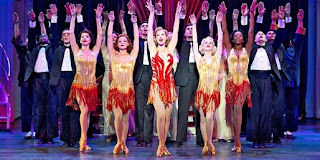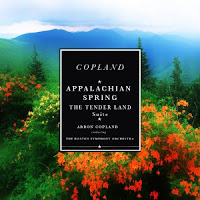I recently saw the new Disney production of
Aladdin, subtitled "The New Musical". Getting tickets was a bit last minute so there wasn't a lot of anticipation, but I did have "A Whole New World" running through my head all day.
The story line is roughly the same as the movie, and doesn't take itself too seriously. A new addition are three friends of Aladdin (Babkak, Omar, and Kassim) who act as narrators, reprising "Arabian Nights" with various verses to advance the story. The lyrics are quite humourous even pointing out that they're going to use the split stage effect to keep the action flowing. One funny line that may play better when the show gets to Broadway was somthing like "they're tourists, they'll clap for anything". I didn't hear so much as a giggle. But then it's likely the majority of the audience were locals and not tourists, something I expect may be different in NYC. Adding these storytellers is an interesting technique and generally it works. What I'm not sure works though is the literal personification of Iago. He comes across more like LeFou from
Beauty and the Beast than Jafar's evil sidekick with his own agenda. Likewise the three friends supplant the faithful sidekick Abu, and the magic carpet doesn't show up until needed for the all important flight of wooing (the Genie provides it as part of Aladdin's wish to become a prince). All understandable changes given the difficulty of turning animated objects into real elements on a stage.
 |
| Aladdin in the market |
The sets were impressive. Agribba grew out of the desert with swirling buildings that were able to give various sky lines including one looking out over the city as Aladdin and Jasmine escape to his loft. There they sang an extra duet "A Million Miles Away" which is a really nice song, that may be new or maybe was cut from the original movie. Another extra song was "Proud of Your Boy", movingly sung by the handsome Adam Jacobs as Aladdin. It appeared in several different reprises and I believe was one that was cut from the film.
I was anxiously awaiting what they were going to do with the Cave of Wonders and sort of expected to be disappointed. Never underestimate Disney and production numbers. Wow! That scene worked on all levels. The outside was impressive, then as Aladdin entered the cave, and our viewpoint switched as well, the sets were staggered as they flew in from the sides giving the impression of moving deeper inside and everything started to shimmer gold. He gets trapped of course and rubs the lamp to read what's written on it and the Genie swirls up from the ground!
James Monroe Iglehart, the Genie, sounded a bit like Robin Williams at times when he reached the
 |
| Genie in the Cave of Wonders |
higher register of his voice, and a few of the gags from the movie were included. So now that Aladdin has met Genie: Cue production number! It had waiters appearing from the back and the wings, a table magically producing food, dancing girls stepping out of gold pillars, Aladdin disappearing and an energetic tap number that I think surpassed "Be Our Guest". The Genie was phenomenal. He delivered magic tricks (pulling a special Mouse out of a hat), and a medley of Disney songs that was awesome! Whoever re-wrote "Friend Like Me" deserves a prize.
 |
| Jasmine in the market |
Jasmine was beautiful, although to be nitpicking I found the swinging, dangling earrings somewhat distracting. Courtney Reed has a great voice and as if sneaking out to the market wasn't enough to show her independence she gets a solo number ("Call Me a Princess") showing her spunkyness at refusing her suitors. No animal sidekick for her either though; pet tiger Rajah was replaced by the much easier to train ladies in waiting.
The second half peaked with "A Whole New World". Disney learned from
Mary Poppins: The New Musical in regards to the creation of a night sky. The garden walls pulled back as Aladdin and Jasmine flew in front of a large moon and sky that twinkled and swirled in the background. Moving larger lights then appeared as actors, almost completely hidden in the dark, gave the sky depth and the carpet flew closer to the front of the stage.
 |
| In the garden pre flight |
The stars switched to planets which weren't quite as effective in hiding the actors twirling them, but added more colour. The carpet provided a surface for a few spot lights to illuminate Aladdin and Jasmine while still remaining quite dark itself. Ending back on the balcony garden, they dismounted and shared a first kiss...cue "awww" moment :)
The "awww" is short lived though, as Jafar appears and drags Aladdin off for trespassing in the Princess's quarters. Jonathan Freeman as Jafar had the voice from the movie picture perfect. And why shouldn't it? He
was the voice in the movie! I haven't seen the film in years and wouldn't have picked it out though. It was the cackle that triggered recognition.
 |
Sultan, Iago, Jafar
(http://tardisdelorean.tumblr.com) |
It was nice to see a Sultan less bumbling than the animated one. Another plus was that he didn't have enough stage time to make me frustrated enough to want to shake him out of Jafar's spell. Clifton Davis played the Sultan in a way that though blinded to Jafar's selfish ambition, there was still hope he'd be capable of fighting Jafar if he recognized what was going on. Jafar's evil was toned down, maybe a bit too much. His reveal of Aladdin's true status of street rat to the palace didn't seem like a particularly big deal. The Genie, now fulfilling Jafar's wishes, arrived and granted the wish to make him Sultan. Jafar's black robe "magically" becomes white matching everyone else (most of the cast was on stage for the wedding already wearing fine white clothes). Maybe there were technical difficulties, but the platform Jafar was on only rose about a foot, so he really wasn't all that imposing. There was no snake, and the snake staff didn't even have glowing eyes (surprising given the ease of using LED lights these days). Aladdin didn't have to fight Jafar, and Jafar's wishing to be the most powerful genie was almost too easy. His decent into the lamp though was well done.
The final dance number had the whole cast getting a chance to strut their stuff with a few Bollywood style dance moves thrown in to some snippets of "A Whole New World". The Genie appeared decked out in Hawaiian shirt and small suitcase ready to travel the world. Unfortunately he didn't say he was headed for Disney World :)
On the way out I overheard someone say the sets were good, the orchestra played the songs well (there were 18 players in the pit, a good size, and the three trumpets were great!), but they ruined the rest. I completely disagree. There may be room for improvement, some tweeking perhaps to a rather long battle of Babkak, Omar, and Kassim's with the palace guards in their attempt to rescue Aladdin. But it's accompanied by the good song "High Adventure" and some funny schtick. Besides, this is the purpose of out of town tryouts, to figure out the best show possible. I think it will only get better, but check it out and form your own opinion. It's in town until the beginning of January before heading to Broadway. May it have a long run and tour again, because it's worth going to see twice.
Photos from Mirvish.com unless otherwise indicated
 One of the collaborations was the "Holiday Hits Medley" which closed the first half. It was a mix of popular songs from the radio that are rarely heard in a concert setting. Backed with a strong percussion section, Patricia Krueger on piano, and the rest of the orchestra Ashley demonstrated her pops singing style. The medley started with Mariah Carey's "All I Want for Christmas is You", moved to "Hard Candy Christmas" delivered with a twinge of Dolly Parton twang, and finished with the always popular "Feliz Navidad".
One of the collaborations was the "Holiday Hits Medley" which closed the first half. It was a mix of popular songs from the radio that are rarely heard in a concert setting. Backed with a strong percussion section, Patricia Krueger on piano, and the rest of the orchestra Ashley demonstrated her pops singing style. The medley started with Mariah Carey's "All I Want for Christmas is You", moved to "Hard Candy Christmas" delivered with a twinge of Dolly Parton twang, and finished with the always popular "Feliz Navidad".















































